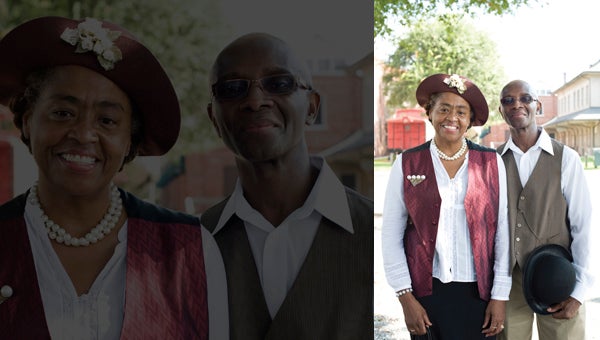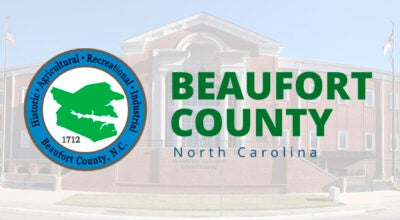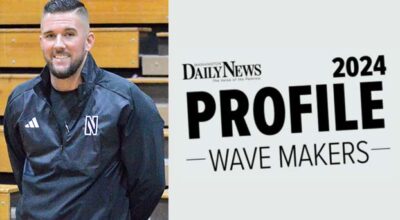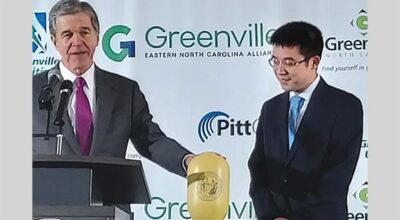Washington designated Network to Freedom site
Published 7:28 pm Monday, September 22, 2014

FILE PHOTO | DAILY NEWS
NETWORK TO FREEDOM FIGHTER: Local historian Leesa Jones successfully petitioned to have Washington added to the National Park Services’ Underground Railroad Network to Freedom map. Jones began looking into Washington’s African-American history while researching her own family history for her children and grandchildren. Through her Facebook page (“I’m from Washington and nobody told me this!”), she shares local history and alerts history buffs to the dates of her next waterfront walking tours.
A Washington woman’s quest to put Washington on the Underground Railroad map has proven successful.
On Sept. 10, Washington was confirmed as an Underground Railroad Network to Freedom Site for its role in helping escaped slaves seek their freedom. The recognition of Washington’s place in African-American history is one Leesa Jones has hoped to achieve for the past three years.
“I just think it’s pretty impressive for Washington,” Jones said. “We had a lot of history that we could document and that really helped.”
Jones, an amateur historian, started her own quest after a request for assistance from Wand Hunt McLean and Jim Wren, of the Phoenix Historical Society in Tarboro. In seeking the information they were looking for, she found ample material that pointed to Washington and its surrounding areas serving as a refuge for those seeking freedom. Union-occupied, Washington was where they could come to find work with the government or on the docks, many housed at the contraband camp, a support camp for the Union Army’s fort. With a large population of freed African-Americans already in the community, Washington became a place to either settle, or from which to set sail.
“Shipping traffic on the waterfront was instrumental in helping enslaved people to gain their freedom through flight or escape to points north, south and to other countries,” Jones said.
On ships leaving the port of Washington, they went north, as far as Canada, and south, to the islands, Jones said.
“When I saw the important role that Washington played as part of the Underground Railroad, I saw that we had a history that was as strong or stronger than those places that are documented in our history books,” Jones said.
To find this out, she pored through books and documents, logs and journals of Civil War soldiers and newspapers advertising rewards for escaped slaves.
“I read enough books to fill a small library,” Jones laughed.
By far the most dramatic of stories she found through her research was that of “Big Bob,” an escaped slave from the Tarboro region, who fought side by side with Union Army soldiers in Washington.
“I had heard the story of Big Bob when I was a little girl. I often heard a lot of stories from the more senior members of the community,” Jones said. “A lot of stories I would hear about them coming down from Tarboro to Washington — the safe ways they could get here.”
“They either came here to escape Confederate camps or plantations they were on. … Washington was a place they were really trying to get to,” Jones said.
While the NPS review committee likely hears many stories on par with Big Bob’s, Jones said in order to get recognition as a Network to Freedom site, it’s not the stories that matter — it’s the documentation. Jones, in her bid, submitted the result of her research to the NPS committee: all 126 pages of it.
Jones is hoping the city’s confirmation as an Underground Railroad site will help the city move forward in a variety of ways — eligibility for Network To Freedom grants when available, ability to use National Underground Railroad Network To Freedom logo for tourism brochures and advertising — to draw tourists and interest to the waterfront.
To Jones, the designation means the possibilities are endless: partnering with East Carolina University for possible archaeological excavations of Fort Washington and other Civil War-related structures; augmenting Washington’s Civil War Trails, partnering with Washington schools, churches, libraries, the North Carolina Estuarium and other entities to enhance or develop Underground Railroad-based environmental heritage programs and activities for children, and even organize a “Friends Of The Washington Waterfront Underground Railroad” to raise money and write proposals for the enhancement of existing tours and programs for Washington tourism.
Putting Washington on the Network to Freedom map is just the beginning, according to Jones.





